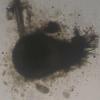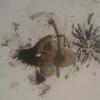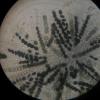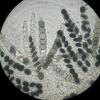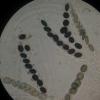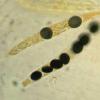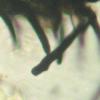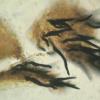
01-03-2010 20:42
 Beñat Jeannerot
Beñat Jeannerot
Bonjour à tous, je viens encore vous embêter ave

11-05-2014 00:54
 Stip Helleman
Stip Helleman
Hi to all,yesterday I found this beatifull species

10-05-2014 19:46
Salvador TelloHola a todos.Creo que estos hongos son Tricharina

09-05-2014 13:19
Hi to everybody On last week-end I have found som
Coniochaeta?
hannie wijers,
11-05-2014 17:37
Hello,
on haredung I found this Coniochaeta (I think)? The measure of the setae were between 24 and 106 µm. The measure of the spores are 18-22x 12-14 µm. It's J- Maybe some of you might have an idea which Coniochaeta it could be? Thanks
Greetings Hannie
Peter Püwert,
11-05-2014 18:53
Re : Coniochaeta?
Hello Hannie,
yes, this is Coniochaeta scatigena (Berk. et. Br.) Cain. The spores are by some species strongly lentiform, with germ slit and setose on the neck.
Greetings
Peter.
yes, this is Coniochaeta scatigena (Berk. et. Br.) Cain. The spores are by some species strongly lentiform, with germ slit and setose on the neck.
Greetings
Peter.
hannie wijers,
11-05-2014 19:07
Re : Coniochaeta?
Thank you Peter. I thougt of this one but wasn't sure about it.
greetings Hannie



